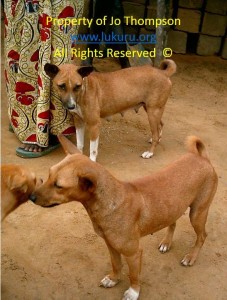The Congo Basin Native Dog

The earliest domestic dogs who made the journey with humans migrating into the region associated with the geographic watershed dominated by the Congo River, established a consistent type as a result of the unique environmental pressures and the purpose for which they were used. Â This type is now known as the Basenji.
Once it became established in Central Africa thousands of years ago, the Basenji type became fixed, easily identifiable as distinct, and isolated into a common gene pool. Through archaeozoology, genetics, behavior, and ancient art, the Basenji is known as one of the world’s earliest aboriginal dog breeds to be divergent from the original domestic dog clade that branched off from the wolf-dog ancestor. Â

Adapted to the landscape under the canopy of the equatorial, old-growth, primary rainforest, this long-established dog became a naturally occurring, distinct breed. Â Isolated principally by the geography of the Congo Basin and traditional technology, the Basenji population established in a niche as a specialized tool used by humans dependent on that ancient forest for their livelihoods in the traditional net-hunt targeting large-bodied, hoofed animals. In this way, the Basenji developed into the breed recognized today. Â

Modern breeders, working to restore some of the original gene diversity lost when the breed was brought out of Central Africa, still look to the Congo Basin for native stock. Â Their options are quickly vanishing as the last few remaining isolated pockets of pure Basenjis are being swamped by Western breeds brought in from the outside.

Text and photos: Jo Myers Thompson
